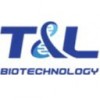Recombinant Human FLT3 Ligand Protein
- FOB Price:Get Latest Price >
- Min.Order:1 Other(s)
- Payment Terms:T/T
- Favorite
Business Type:Others
Country/Region:China
Ddu Verified
HOT Rank


T&L Biotechnology
We are professional supplier of Recombinant human IL-7 protein,Recombinant Human IL-15 Protein,Recombinant Human IL-21 Protein,Humanized Anti-Human CD3 mAb,Humanized Anti-Human CD16 mAb,Humanized Anti
Business Type:Others
Country/Region:China
Ddu Verified
HOT Rank

Catalog Number: GMP-TL505
Product Name | |
Generic Name | Recombinant Human FLT3 Ligand Protein |
Synonym | FLT3LG,FL,FLT3L,Flt3 ligand |
Product Information | |
Construction | A DNA sequence encoding the human FLT3 Ligand(NP_001450.2)was expressed with a His tag at the C-terminus. |
Expression Host | HEK293 cells |
QC Testing Purity | > 90 % as determined by SDS-PAGE |
Activity | Determined by the dose-dependent stimulation of the proliferation of AML5 cells.The expected ED 50 for this effect is ≤ 10 ng/ml. |
Endotoxin | < 0.1EU per 1μg of the protein as determined by the LAL method. |
Molecular Mass | The recombinant human FLT3 Ligand protein contains 161 amino acids with a predicted molecular weight of 18.4 kD. |
Formulation | Lyophilized from sterile PBS, pH 7.4. Normally 6 % mannitol are added as protectants before lyophilization. |
Stability & Storage | 24 months at 2℃ to 8℃ in lyophilized state. 6 months at -20℃ under sterile conditions after reconstitution. 12 months at -80℃ under sterile conditions after reconstitution. Recommend to aliquot the protein into smaller quantities after reconstituting with water for injection, normal saline or PBS, and keep the diluted concentration above 100μg/mL. Avoid repeated freeze-thaw cycles. |
Background | |
FLT3 ligand is a growth factor that regulates the proliferation of early hematopoietic cells. FLT 3-ligand binds to cells expressing tyrosine kinase receptor FLT3. The FLT3 ligand itself does not stimulate the proliferation of early hematopoietic cells, but rather synergistically induces growth and differentiation with other CSFs and interleukins. Unlike SCF, FLT3 ligand has no effect on mast cell. Multiple subtypes of FLT3-ligands have been identified.The main bioactive form is anchored on the cell surface as the extracellular domain of transmembrane protein (209 a.). The membrane binding isomers can be cleaved by proteins to form biologically active soluble isomers. | |
References | |
1. Measurable residual disease (MRD) monitoring by NGS before allogeneic hematopoietic cell transplantation in AML.Thol F, Gabdoulline R, Liebich A, Klement P, Schiller J, Kandziora C, Hambach L, Stadler M, Koenecke C, Flintrop M, Pankratz M, Wichmann M, Neziri B, Büttner K, Heida B, Klesse S, Chaturvedi A, Kloos A, Göhring G, Schlegelberger B, Gaidzik VI, Bullinger L, Fiedler W, Heim A, Hamwi I, Eder M, Krauter J, Schlenk RF, Paschka P, Döhner K, Döhner H, Ganser A, Heuser M.Blood. 2018 Sep 6. pii: blood-2018-02-829911. doi: 10.1182/blood-2018-02-829911. 2. Absence of FLT3 mutations in Iranian adult T-cell leukemia/lymphoma patients.Ayatollahi H, Sadeghian M, Kooshyar M, Shirdel A, Rahimi H, Jafarian A, Ghazaei S, Soltani N, Shams F, Motamedi Rad N, Shakeri S.Med J Islam Repub Iran. 2018 Jun 9;32:47. doi: 10.14196/mjiri.32.47. eCollection 2018. Trial dosage: A customer can apply for up to five samples a year (the actual trial dosage is determined by telephone or email communication). | |